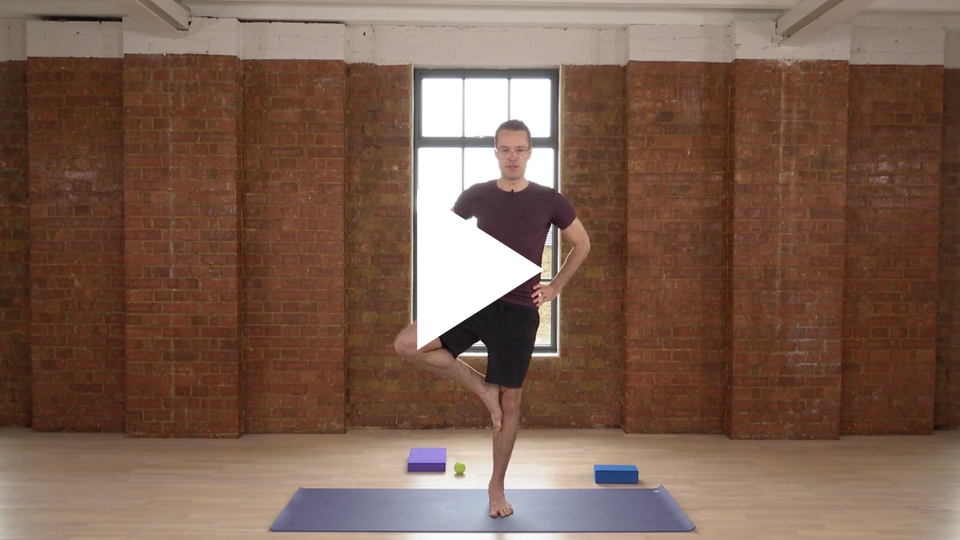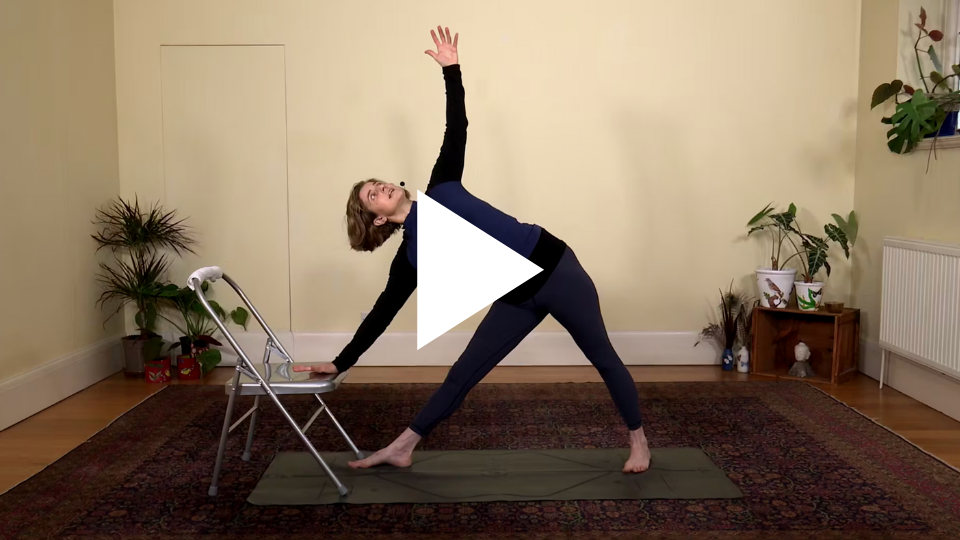
Legs are part of the foundation of many yoga poses. In this article we explore yoga for legs and highlight the best poses to build strength.
Working on the legs is as important as working on any other part of the body. Strengthening the legs develops good body symmetry, improves functional movement and can help maintain good bone health. In sports it not only improves performance but can also help prevent injury and aid recovery.
Yoga can be an excellent way to build strong legs, which is why this article is all about yoga for legs! We will cover:
- Anatomy 101: Muscles of the Legs
- Strengthen vs Stretch
- Build Muscle Strength
- Strength Through Balance
- Classes for Strong Legs
Anatomy 101: Muscles of the Legs
We’ll focus on 4 key muscle groups of the legs:
- Quadriceps, or quads – the group of 4 muscles in each front thigh
- Hamstrings – the 3 muscles making up the backs of each thigh
- Gluteus muscles, or ‘glutes’ – the 3 muscles that wrap around the outer hips and buttocks on each side of the body
- Calves – the muscles at the back of the lower legs
Yoga for Legs: Strengthen vs Stretch
Yoga enables us to build flexibility and strength. Paying attention to the legs helps distinguish between movements that strengthen or lengthen the muscles. It is an opportunity to become more mindful about the effects of our practice.
Muscles become tight when they are shortened. E.g. high-heeled shoes can shorten the calves and cycling can tighten the quads and hamstrings. When we lengthen the muscles it causes the ends of the muscles to move away from each other, this eases tightness and improves flexibility.
Muscles can be strengthened in 2 ways:
- Isotonic contraction, where the distance between the two ends of the muscle either shortens (concentric contraction) or lengthens (eccentric contraction)
- Isometric contraction, where the overall length of the muscle does not change during contraction.
Most asanas are physically static, so muscular contractions tend to be isometric ones, but transitions from one pose to another involve an interplay of concentric and eccentric muscular contraction.
Uttanasana
Uttanasana, a standing forward fold, requires the hamstrings to lengthen and stretch.
For eccentric contraction of the hamstrings, make your way down slowly in a controlled way, folding at the hip joints. On the way back up the muscles shorten and contract – a concentric contraction. Uttanasana also develops flexibility in the hamstrings, so it’s a great overall pose for the back of the legs.
This Stretch and Strengthen: Legs and Bums class with Clive Fogelman focuses on the legs and the gluteus muscles. Do it mindfully to get a sense of which actions strengthen the muscles and which improve flexibility.
If you ever feel disheartened about having ‘tight’ hamstrings, remember this:
‘Yoga is not about touching your toes. It’s what you learn on the way down’
Jigar Gor
YOGA FOR LEGS: BUILD MUSCLE STRENGTH
Holding static poses generally requires isometric contraction. For example, in Virabhadrasana II (Warrior II) the front leg is bent and the length of the quadricep muscles remains constant. Hold it for a period of time and you will start to feel the burn!
This Tutorial: Explore Standing Yoga Poses with Lizzie Reumont uses a chair / wall as options for the following standing poses:
- Virabhadrasana I (Warrior I)
- Virabhadrasana II (Warrior II)
- Trikonasana (Triangle Pose)
- Utthita Parsvakonasana (Extended Side Angle Pose)
Paripuna Navasana
Navasana (Boat Pose), is known for strengthening the core and abdominal muscles. In common with other poses with straight legs, it also strengthens the quads.
Utkatasana
Utkatasana (Chair Pose), builds strength in the quads, hamstrings and calves.

Supta Virasana (Reclined Hero Pose)
Remember to stretch the muscles after strengthening. Supta Virasana, Reclined Hero Pose, provides an effective quad stretch. Here’s how to get the most from this pose.
Hamstrings
For an effective hamstring stretch in a supine pose, grab your strap and try Hips and Hamstrings for All with Clive Fogelman. Your lower back will thank you for it too!
YOGA FOR LEGS: STRENGTH THROUGH BALANCE
Balancing poses work well to strengthen the lower legs and ankles. Here are two balance poses to try that are great yoga for legs:
- Vrksasana (Tree Pose) tutorial with Catherine Annis.
- Ardha Chandrasana (Half Moon Pose) tutorial with Catherine Annis

Articles to read on yoga for leg strength and balance:
- Learn about Balance, Strength and Mobility: Why Training the Glutes is Important in this article from Clive Fogelman.
- You can read more about yoga balances here.
YOGA FOR LEGS: CLASSES FOR STRONG LEGS
Are you ready to practice yoga for legs? Here are some classes that will help strengthen the legs:

Beginners 3 Standing Poses with Clare Beagley is a good starting place to build strength and steadiness. You’ll transition through Adho Mukha Svanasana (Downward Facing Dog), another effective ‘yoga for legs’ pose.

Strengthen and Mobilise: The Lower Body with Andrew McGonigle. We often feel a tightness that we assume needs a stretch, but sometimes it is strengthening that’s needed. So, this class focuses on mobilising joints in their full range with the emphasis on strength.
Barre
Barre is a wonderful and fun way to strengthen the legs. Here are three classes with Amy Holly:
- Barre for Cardio and Strong Legs will help tone quads, hamstrings, glutes and calves.
- Barre Leg Blast provides a 16-minute workout for the legs
- Stand in Your Strength uses barre techniques to help us remember and celebrate our strength.
A FINAL THOUGHT AND CALL TO ACTION
Yoga for legs doesn’t just benefit the legs!
When the foundation of our legs is strong, we feel strong throughout our body. Why not set yourself a goal and select one or more of the suggestions from this article to do this coming week?
What will you commit to? (Let us know in the comments)
p.s. want to know more about building arm strength too? Read Yoga Arm Balances for Strength and Stability also by Helen Krag!

Author: Helen Krag. Helen is a health and wellness enthusiast; observer of human behavioural change; yoga teacher trainee; passionate traveller; and lover of the outdoors.










Leave a Reply